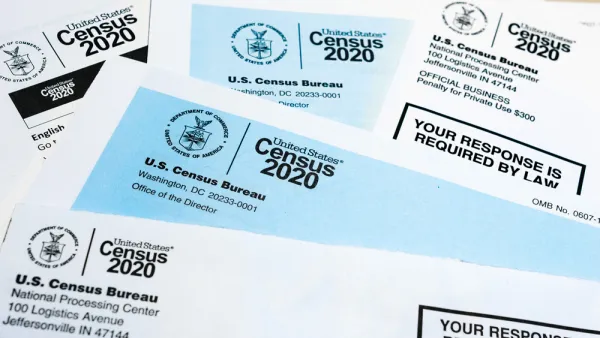The NYT editorializes on the just-released April 2010-July 2011 census data that shows a notable slow-down in exurban growth as urban growth increased. Pointing to the problems that accompanied America's embrace of sprawl, they welcome the change.
The editors note that despite the upturn in the economy, the sprawling growth patterns have not returned.
The demographic data showing "peak exurban growth" in 2006 mentioned below correlates with "peak oil consumption" in 2007 and "peak vehicle miles driven".
"For generations, Americans have migrated ever outward from city centers, pulled by affordable housing to places where long commutes were possible because of cheap gasoline. The costs of such migration - in traffic congestion, environmental degradation and increasing addiction to fossil fuels - were played down or ignored.
As a demographer, William Frey of the Brookings Institution, told The Times recently, exurbs were once the "cutting edge" of growth, but no more. "That growth has really come to a standstill," he said, "and is maybe being given up for dead at this point." His analysis of data found that the country's outer suburbs grew by only 0.4 percent in the fiscal year ended in July, down from 1 percent the same period before. It peaked, in 2006, above 2 percent.
The Census Bureau also recently reported that America's urban population increased by 12.1 percent from 2000 to 2010, faster than the nation's overall growth rate of 9.7 percent. The exurban tide may be receding."
FULL STORY: Pulling Back From the Exurbs

National Parks Layoffs Will Cause Communities to Lose Billions
Thousands of essential park workers were laid off this week, just before the busy spring break season.

Retro-silient?: America’s First “Eco-burb,” The Woodlands Turns 50
A master-planned community north of Houston offers lessons on green infrastructure and resilient design, but falls short of its founder’s lofty affordability and walkability goals.

Delivering for America Plan Will Downgrade Mail Service in at Least 49.5 Percent of Zip Codes
Republican and Democrat lawmakers criticize the plan for its disproportionate negative impact on rural communities.

Test News Post 1
This is a summary

Test News Headline 46
Test for the image on the front page.

Balancing Bombs and Butterflies: How the National Guard Protects a Rare Species
The National Guard at Fort Indiantown Gap uses GIS technology and land management strategies to balance military training with conservation efforts, ensuring the survival of the rare eastern regal fritillary butterfly.
Urban Design for Planners 1: Software Tools
This six-course series explores essential urban design concepts using open source software and equips planners with the tools they need to participate fully in the urban design process.
Planning for Universal Design
Learn the tools for implementing Universal Design in planning regulations.
EMC Planning Group, Inc.
Planetizen
Planetizen
Mpact (formerly Rail~Volution)
Great Falls Development Authority, Inc.
HUDs Office of Policy Development and Research
NYU Wagner Graduate School of Public Service





























